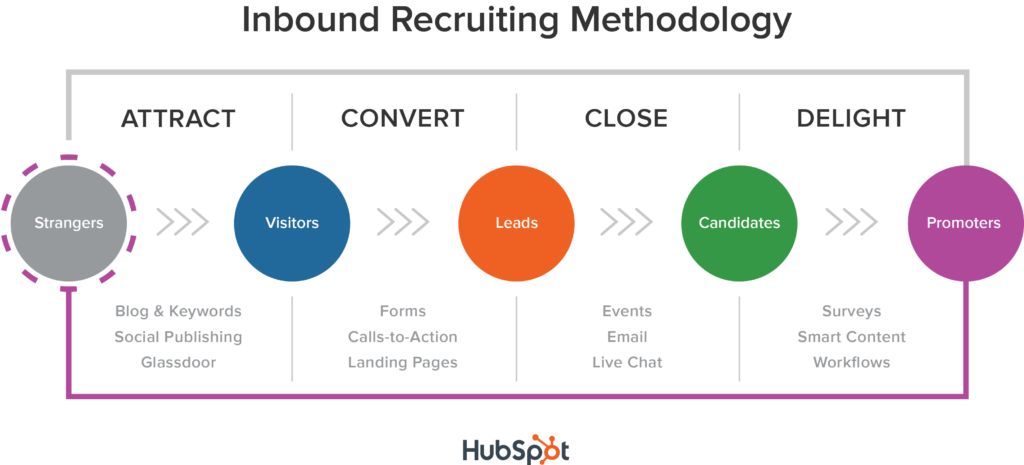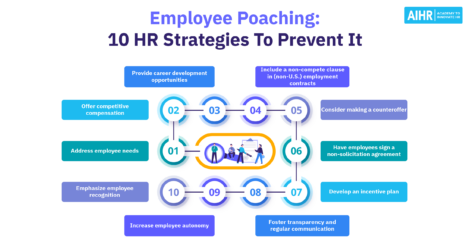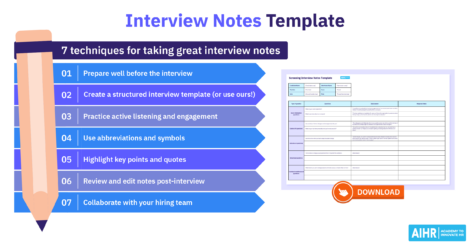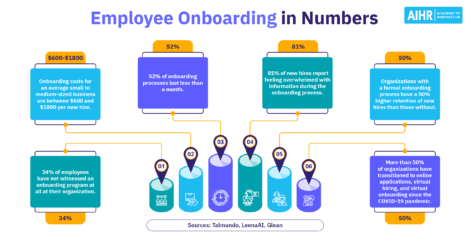Inbound Recruiting: Benefits, Drawbacks, and 11 Tips to Get Started

Whether you are looking for a new job or you are hoping to hire someone, recruiting is part of your professional life at various stages. You can find a candidate or a job through either inbound or outbound recruiting. Outbound is probably what you’re familiar with, but inbound can be an excellent way for companies to attract quality candidates.
In this article, we dive into inbound recruiting; what is it exactly, what are the benefits and drawbacks, and how can you make your inbound recruiting more effective? Here goes!
Contents
What is inbound recruiting?
Inbound vs. outbound
Benefits and drawbacks of inbound recruiting
11 tips for your inbound recruiting strategy
Wrapping up
FAQ
What is inbound recruiting?
Put simply, inbound recruiting is a mix of employer branding and recruitment marketing. The people over at Crowdstaffing.com give a good definition: Inbound recruiting is a methodology used to create a remarkable experience for candidates by producing specific branded content that will increase your employer brand perception and improve your relationship with both active and passive candidates throughout the different stages of the recruiting process.
Hubspot has put the inbound recruiting methodology into a four-stage candidate journey – as pictured in the image below – inspired by the inbound marketing methodology and its customer journey. The idea is to nurture your potential candidates at each stage of the funnel through the various interactions they have with your employer brand.

Inbound recruiting is a strategy based on making the company attractive enough for potential candidates to come directly to you, rather than going out and seeking these candidates. While this may sound easy, building a quality inbound recruiting program is something that can require a tremendous amount of work.
Inbound vs. outbound
Outbound recruiting is the traditional recruiting that you are familiar with. A recruiter (or headhunter) receives the assignment to fill a particular position and then finds candidates.
A recruiter can do this in several ways as there are many different recruitment strategies they can use – from active networking to simply posting a job on a job board. The goal is generally to fill a specific position. While recruiters do work to keep their networks filled and a pipeline available, actual recruiting occurs when a job opens up. Otherwise, things are often on the back burner.
An outbound recruiter’s primary focus is to go out, find, and bring back the ideal candidate.
Inbound recruiters focus more on creating the ideal environment to attract candidates and build relationships with them. This means a focused company website that can attract quality candidates. You want a regularly updated blog to boost your Google rankings, lots of information about the company and its values, and well-written job postings that will catch a candidate’s eye.
It also means that SEO is critical to recruiting. Instead of candidates freshening up their LinkedIn profiles to attract the recruiter, the recruiter revamps the website to attract candidates.
Up to 80 percent of job candidates are passive job seekers, so if you’re not going out to get them (outbound recruiting), you have to do something spectacular to bring them to you.
Benefits and drawbacks of inbound recruiting
Let’s start with the advantages:
- Quality candidates. One of the most significant benefits of inbound recruiting is that your candidates are genuinely interested in the company. They took the lead in applying and reaching out, so you already know they aren’t just looking for “a” job, but “this” job – or at least a job with this company.
- More diverse candidates. A company with a good reputation can draw applicants from all areas and all types of backgrounds. This is why it’s important to think about your Employer Brand and Employee Value Proposition; it can diversify your applicant pool more efficiently than traditional networking methods (because people tend to seek out others like themselves, making diversity difficult.) However, this only works if your inbound strategy is effective. Otherwise, your applicant pool can be thin.
- It boosts your Employer Brand. A lot of outbound recruiting is sales based – the recruiter sells the company and the job to the candidates, hoping to convince them (especially the passive ones) to give our company a try.
Inbound recruiting is also sales-based, but rather than a recruiter acting as the salesperson, the marketing department and public relations department play a more substantial role. They, generally, control the website and, in so doing, communicate about your employer brand and influence future candidates.
Some of the drawbacks of inbound recruiting include:
- It takes time. Inbound recruiting isn’t suitable for crisis recruiting. When you need to fill a position as soon as possible, you can’t wait for people to conduct internet searches, read your blog posts, and decide whether there are any available jobs. You will need to actively seek candidates to fill the position rapidly (if there are not enough people in your pool). This means that inbound recruiting cannot stand on its own.
To be fair, outbound recruiting should also not stand on its own. Any company that doesn’t have an engaging website will struggle to bring in quality candidates – even if the jobs are good. - Not ideal for non-core roles. You may find it difficult to fill jobs that aren’t part of the core business through inbound recruiting. For instance, doctors, nurses, and respiratory therapists will quickly seek out jobs at a hospital, but accountants, food services, and IT people may not land on your hospital’s webpage. They can work for any number of businesses in any number of sectors.
11 tips for your inbound recruiting strategy
While neither inbound nor outbound recruiting provides a perfect strategy that can stand independently, there are things you can do to make your inbound recruiting more effective. Here are eleven suggestions.
- Be patient. Just like it takes years for a recruiter to build up a strong network, it will take time for your business to build a website that will attract quality candidates. You can’t simply create a lot of content and dump it on the internet in one day and have the candidates roll in the next. You need to take time to build quality content and time to attract candidates.
- Focus on keywords and SEO. You want to think like a candidate – what are they searching for on the internet? For passive candidates, it’s probably not “jobs in [field].” Instead, they will be searching for things of interest. Take the time to research relevant keywords and create your content around that.
- Update regularly. Google prioritizes new content over old. You may have great information with great keywords from 2018, but it’s unlikely to draw in many candidates – especially if your competitors are actively updating their websites.
- Consider using video as well as text. If you want people to know what it’s like to work at your company, show them via videos. These don’t have to be slick ads with graphics and fancy editing. You can simply create videos of current employees talking about their jobs. Try a “day in the life” series to let people know what it’s really like.
- You need a strong social media strategy. Some people will never hit Google looking for information but will follow businesses on social media. Whether it’s LinkedIn or TikTok, you’ll find candidates if you can build a following. Each social media site attracts different types of candidates, so develop your strategy wisely. If you’re hiring for a lot of entry-level positions, target TikTok. If you’re looking for more senior leadership people, Facebook and LinkedIn tend to skew towards more experienced candidates. In other words, go multi-channel.
- Make a strategy and define candidate personas. Recruitment.com reminds recruiters that an inbound program isn’t merely a ‘build it and they will come’ approach. You need to know who you’re targeting in order to establish a clear plan – and the right content – to get the candidates you need.
This is where candidate personas come into play. Layout the characteristics you’re recruiting for and build your strategy around this. Questions you could ask yourself regarding the candidate personas are: what key soft and hard skills do they need and what will be their daily tasks. - Build and maintain a talent pool. A talent pool can be a great inbound recruiting resource, especially if you’ve identified at what stage the candidates in your talent pool are (ready to be hired, not ready yet, just interested in your company, etc.).
If you’ve segmented your talent pool you can send people content that meets their specific needs and interests; someone who is ‘just browsing’ is likely to be less interested in actual vacancies, for example, but maybe keen on receiving content that can help them with their career. And someone who applied for a role but didn’t get it might be keen on receiving other vacancies. - Market yourself and your leaders. Yes, public relations people do this already, but you don’t need PR people to land in the spotlight with today’s social media. Your senior leaders should seek out opportunities for guest spots on industry podcasts. Have a strong social media presence – but remember to be professional and on-brand.
- Court your candidates. Sure, they come to you with an inbound approach, but that’s just like them asking you out on the first date. You need to show them you are interested as well. Respond rapidly, keep the conversation flowing, and keep your candidates up to date.
- Be willing to revamp your strategy. If you’re attempting to attract experienced salespeople, but all you get is college students and recent grads, you’re doing something wrong. Be accepting of feedback and make changes as needed. This isn’t something you can expect to master overnight.
- Make it easy to apply. People desperate for work will jump through your hoops (upload your resume here, now type all the information into these boxes, now gives us a 90-second video telling us a bit about yourself). Passive candidates will lose patience with your process.
Wrapping up
Inbound recruiting can give you a new slate of candidates, attracting people who might ignore a recruiter’s phone call. However, it requires a strong strategy and diligent work to get people interested in and focused on your company.
This is not a strategy for a company that has a bad reputation. The company needs to focus on fixing their reputation before they can expect candidates to come to them. Repairing a bad public image is critical to inbound recruiting success.
Overall, combined with a more traditional outbound recruiting program, inbound recruiting can help your company get the talent it needs in tight markets.
FAQ
Put simply, inbound recruiting is a mix of employer branding and recruitment marketing.
Benefits of inbound recruiting include the fact that it will get you more diverse and better quality candidates and that it can help you boost your employer brand.
Things you can do to have a more effective inbound recruiting strategy include creating candidate personas, building and maintaining a talent pool, being open to feedback and change your strategy where necessary, and using multiple channels.
Weekly update
Stay up-to-date with the latest news, trends, and resources in HR
Learn more
Related articles
Are you ready for the future of HR?
Learn modern and relevant HR skills, online











